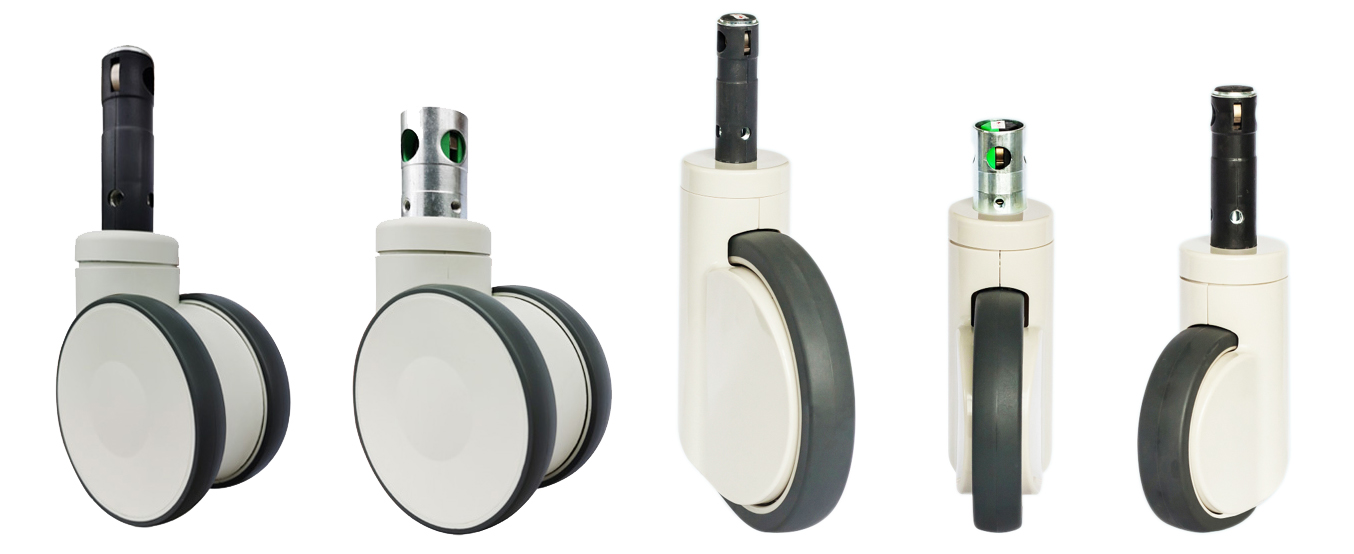The reasons for the short life of casters
1. Overloading is one of the main reasons for the short life of casters. Under normal circumstances, except for professional forklifts and trolleys, users seldom know the maximum load-bearing weight of casters. This is mainly due to the manufacturer's identification and explanation of the maximum load-bearing capacity of the casters, and there is a lack of communication.
Have you ever seen a shopping cart marked with a carrying weight? Does the sofa in your home indicate how many people can sit on? On the other hand, the user lacks knowledge of the load capacity of casters. It is like a car with a load of 2 tons but a load of 5 tons. Such a car will accelerate and twist, but the slope that can be climbed is overloaded. In some factories, there are often 2 tons of trolleys that carry 3 tons of goods. As a result, the outer skin (polyurethane) of the wheels falls off and breaks, and the frame is deformed. The impact of overload on the casters: the small turntable is severely deformed, the steel ball falls off, and the bearing wears quickly, which causes the caster bracket to deform and affects the steel ball running track, and even the bracket is overwhelmed and deformed to contact and jam the wheel. Leading to the wheel, deformation, cracking, and degumming .
2. The different work condition need the casters with different materials. Therefore, the user should fully consider the environment of the place the casters working when using it, and use different casters according to the environment. In acid and alkaline occasions, cast iron wheels are not suitable for use. Cast iron wheels will quickly rust and corrode, resulting in failure to rotate normally. In textile mills and garment factories with many windings or thread ends, it is advisable to use casters with anti-winding function to prevent winding or thread ends from getting entangled in the bearings or entering the steering steel ball track when the wheels are rotating. Casters made of high-temperature phenolic resin should be used in high-temperature workplaces
Or use cast iron wheels or high temperature resistant nylon wheels to avoid thermal deformation of the casters and failure of normal operation due to high ambient temperature. In cold places, casters with larger assembly tolerances should be used to avoid cold bursting of the wheels due to cold shrinkage. Cast iron casters should not be used in places with a lot of iron nails or glass. It is suitable to use casters with larger wheel diameters on uneven ground; if the wheel diameter is too small, the impact resistance will be poor, and the service life of the casters will be naturally shorter in such places.
3. The casters are not maintained, like other equipment, they also need maintenance. The main task of maintenance is to add lubricating oil to the moving parts of the casters. The second is to make sure that it is attached to the moving objects. As a result, the outer skin (polyurethane) of the wheel falls off and breaks, and the frame is deformed.


 English
English Spanish
Spanish German
German Russian
Russian Arabic
Arabic Portuguese
Portuguese Italian
Italian French
French Hebrew
Hebrew Turkish
Turkish